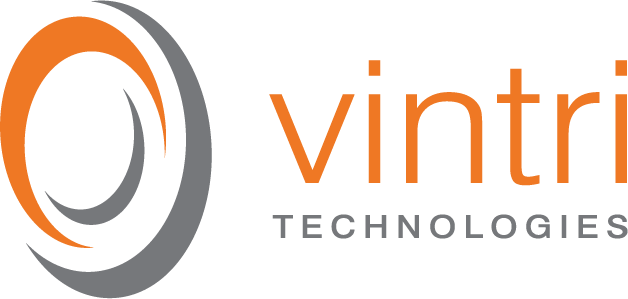Lessons Learned: Optimizing Secondary Identifiers for Pipeline Traceability
Proper labeling can improve efficiency, reduce errors, and enhance asset control for midstream operators.
In the midstream sector, the traceability of assets such as pipes, valves, and fittings is crucial for project success, safety, and regulatory compliance. Traditionally, regulated stencils or stamps have been used for asset identification, but relying solely on these methods can be limiting and prone to human error. Enter secondary identifiers: labels that provide a better way to access data while improving efficiency and minimizing the risk of data capture errors.
Secondary identifiers, such as barcoded or QR-coded labels, enhance the traceability process and allow stakeholders to streamline asset management. However, as we’ve seen with many midstream projects, the implementation of these labels can come with challenges if not properly understood and applied. Here are some key lessons learned about secondary identifiers for pipelines.
1. The Importance of Durable, Reliable Labels
Not all labels are created equal. In the demanding conditions of pipeline construction, durability is critical. Labels exposed to harsh weather, UV rays, and fluctuating temperatures must be able to withstand these elements without losing their functionality. Many projects have faced delays because poor-quality labels became unreadable due to wear and tear, or they simply peeled off in the field.
Vintri Technologies addresses this issue by providing UV-protected polyethylene labels, specifically designed for the oil and gas industry. These labels are pre-printed with a QR code, 2D barcode, and alphanumeric identifier, all of which are unique to each asset. This ensures that the label remains functional and scannable throughout the asset's lifecycle.
2. Adhesion Is Key to Long-Term Success
A common issue encountered on-site is the poor adhesion of labels, especially on surfaces exposed to frost or extreme cold. When a label is not firmly applied, it can peel away, rendering the identifier useless and introducing gaps in traceability.
To avoid this, crews need to ensure the label is securely fastened using a firm glove or silicone squeegee. Special attention must be given to smooth out any air bubbles that could allow moisture to seep in, which could cause the label to loosen over time. A seemingly small detail like this can significantly impact the effectiveness of the entire traceability system.
3. Why Barcodes and QR Codes Are Essential
Ideally, secondary identifiers should include both a barcode and a QR code. This dual feature maximizes compatibility with various scanning devices and ensures that stakeholders can access the data easily, whether using specialized equipment or a mobile device.
Barcodes are well-suited for traditional scanners, often used in industrial settings, while QR codes can be scanned quickly with smartphones or tablets. This flexibility helps ensure data capture is both accurate and efficient, reducing the likelihood of errors or delays in the field.
4. Overcoming Technology-Related Obstacles
One of the benefits of secondary identifiers like labels with barcodes and QR codes is that they can be easily scanned with mobile devices. However, there are some practical challenges to consider. Many phone or tablet batteries won’t last a full production shift, particularly in outdoor or remote environments. To ensure continuity, battery packs with cords should be standard issue, allowing crew members to charge their devices while continuing to work. This prevents downtime and ensures that the traceability process remains uninterrupted.
Additionally, devices used for scanning can inadvertently trigger fire alarms if the flash is activated. Even when the flash is disabled via software, it’s a good practice to tape over the camera light to prevent accidental activation, especially in sensitive environments like refineries or storage facilities.
5. The Role of Unique Identifiers in Data Accuracy
Inaccurate or missing data can lead to costly errors during the project lifecycle. For example, a mismatched pipe or valve could lead to delays, rework, or even safety issues. One key lesson learned from many midstream projects is the necessity of unique identifiers on every label. This avoids the confusion that comes from duplicate codes or ambiguous identifiers.
Each Vintri Technologies label is embedded with a unique code, ensuring that every component has its own distinct traceability record. This not only helps maintain accuracy but also allows for seamless integration with digital asset management systems. As a result, stakeholders can confidently track and verify every asset in real time.
6. Secondary Identifiers Enable Better Data Capture and Supply Chain Visibility
From the moment a pipeline component is manufactured to the day it is installed, labeled, and tracked, secondary identifiers play a key role in capturing accurate data. This data is critical for midstream owner-operators, as it ensures consistency across the supply chain. A reliable secondary identifier enables each stakeholder, from manufacturers to inspectors, to contribute to a comprehensive traceability record.
By using barcode or QR labels, midstream operators can dramatically reduce human error. No more scribbled notes on pipes or guesswork—these digital tools ensure accuracy and allow for quick, efficient scanning that feeds directly into the project’s data system.
Conclusion: Streamlining Projects with Vintri Technologies’ Labeling Solutions
The lessons learned from the application of secondary identifiers in midstream projects underscore the need for durable, reliable, and uniquely identifiable labels. Secondary identifiers such as those provided by Vintri Technologies offer a clear advantage by improving traceability, enhancing data accuracy, and ensuring that all project stakeholders have access to the right information at the right time.
If you're planning a pipeline project, don’t overlook the importance of high-quality secondary identifiers. Vintri Technologies' durable, UV-protected polyethylene labels, featuring unique QR codes and barcodes, are designed to stand up to the harsh conditions of oil and gas environments. Reach out to one of our team members to learn more about how our labeling solutions can support your project’s success.
Vintri Technologies’ vintriCORE platform provides a robust solution for managing and preserving material traceability, ensuring that midstream companies can operate with confidence and transparency. Schedule a complimentary online demo to see how we can assist your midstream organization.



